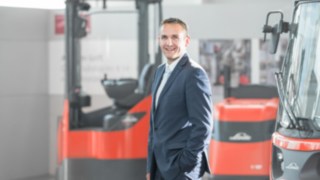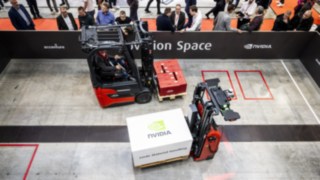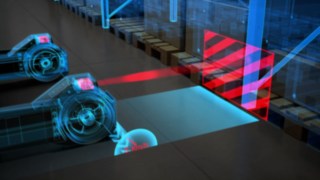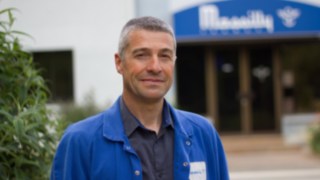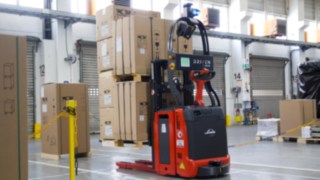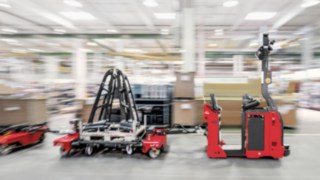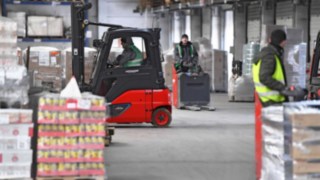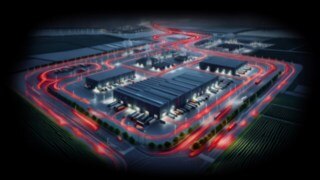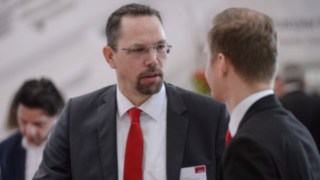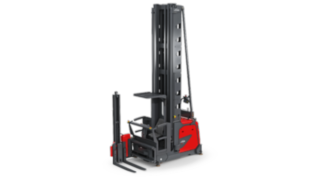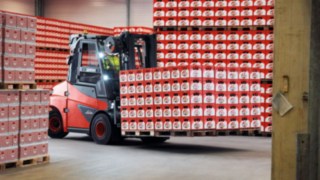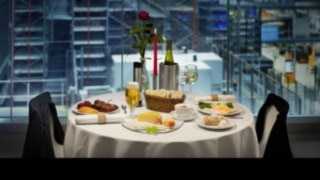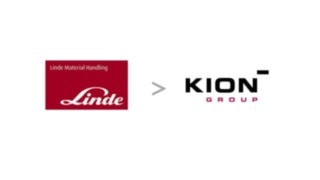Interview with Markus Schmermund, Vice President Automation & Intralogistics Solutions
Automation: Automation in existing structures requires a considered approach
Automation in existing structures? According to Markus Schmermund, Vice President Automation & Intralogistics Solutions at Linde Material Handling, more and more automated logistic applications are being given the green light. In this interview, the Linde expert explains what key factors are involved and gives some fascinating insights into the current situation.
Mr. Schmermund, when we talk about automation, “greenfield” solutions—i.e. having free rein when planning goods flow processes for a new warehouse environment—these are a dream for any application engineer. But, of course, the reality is often quite different...
Markus Schmermund:No question. In recent years, we at Linde Material Handling in EMEA have commissioned around 1000 automated industrial trucks in some 200 automation projects. Approximately 65 percent of these were conventional transport applications—and a further 70 percent of these were implemented in existing warehouse and process environments. The vast majority of these were “brownfield solutions” as we call them. This has allowed us to amass a wealth of experience and a high level of competence.
What are the specific challenges with brownfield solutions?
MS:For most of the existing industrial facilities or warehouse complexes, automation simply wasn’t a consideration at the time of construction or when the logistics were being planned. In other words, all structures were designed with manual operation in mind. This affects everything from floors and aisle widths, to the prevalence of mixed traffic, right through to theIT infrastructure. All in all, we’re somewhat limited in what we can do, which presents us with all sorts of challenges.
So, is the idea of using plug-and-play solutions in brownfield environments merely wishful thinking?
MS:Yes and no. It is worth mentioning at this point that, generally speaking, a manualgoods flow processcannot simply be replaced with an automated process. It is much more important to keep an eye on the bigger picture, and this means looking at upstream and downstream processes. The crucial question for the customer is, therefore, not so much “Can I automate this or that?” but rather “What does the optimal goods flow process look like?” What’s more, not everything that is technically feasible makes economic sense. The most important factor for us as automation experts is whether the project makes financial sense for the company in question, which is why we always provide profitability costings for all projects. If these show that automation could be a good solution, our years of experience enable us to offer customers various solution modules that can be implemented quickly. Example: If you want to always transport goods from a specific pick-up point to a specific dispatch area via the same route, our start-up engineers can generally implement this within a few weeks.
As well as having an understanding of the processes involved, what other key factors should customers be aware of to ensure that automation is a success?
MS:In my experience, a key first step is to create a detailed requirements specification sheet, which can then be used as a basis for the technical specification sheet. It’s also important to have a project management team with expertise and vision that can work with us to create a realistic implementation plan including regular meetings. As part of this process, it is essential that care is taken to include all relevant areas of the company: This included sectors such as occupational safety, IT, if necessary production, and, of course, the employees themselves, in order to deal with any reservations and ensure the solution is widely accepted. Finally, a clearly organized acceptance procedure with performance and availability tests, as well as a safety check is also required.
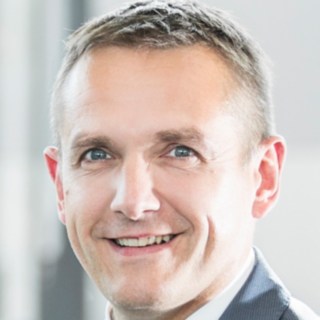
Generally speaking, it’s not possible to simply replace a manual goods flow process with an automated process.
Markus Schmermund, Vice President Automation & Intralogistics Solutions
Automation is the hot topic at the moment—not just due to the coronavirus—and this looks set to continue in the coming years. Why should customers choose Linde as a partner?
MS:Because we can offer them the full package:forklift trucks,automation technology,process expertise,commissioning and—most important of all—service. Thanks to our extensive dealer network, companies can be sure that both our manually operated industrial trucks and their automated “colleagues” can be serviced quickly and effectively.
At the start of the interview, you said that the majority of automation projects implemented in recent years were for conventional transport applications. What do the prospects for other intralogistics segments look like?
MS:More and more of our automation solutions look like they are nearing readiness. In production supply, storage, and dispatch, Linde has already achieved a high level of readiness with its automation applications, which are also comparatively easy to implement in brownfield environments. For example, companies can opt for semi-automated industrial trucks like our N20 SA for order picking. And here, too, things are moving rapidly in the direction of full automation. For example, we are currently working on a fully automated, mobile order picking solution with independent gripper technology and a vision system for goods recognition, as part of our 2024+ innovation projects. There are also plans to introduce automation to incoming and outgoing goods processes, where, until now, conventionalcounterbalanced forklift truckshave been used. The challenge: We often leave the indoor area here, e.g., when transferring loads from the hall door to the lorry, and have to deal with issues like weather conditions. However, we will soon have a technical solution for this too—and one that meets the quality standards that customers are used to and rightly expect from us.
Mr. Schmermund, thank you very much for your time.
